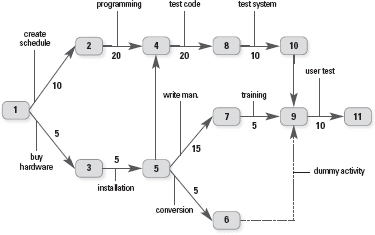
Most work in business is a series of projects. Your ability to complete projects largely determines your success in your career. A project is defined as a “multitask job.” A project is a result that requires the completion of a series of many smaller jobs.
Perhaps the most powerful tool you can use to maximize your effectiveness and dramatically increase your level of accomplishment is a checklist. A checklist consists of a written series of steps, in chronological order, which you create in advance of beginning work in the first place.
Your ability to clearly define and determine the steps that you will have to take from where you are today to a successfully completed project is a mark of superior thinking. The rule, once again, is that every minute spent in planning and creating checklists will save you ten minutes in execution and getting the job done. This is another example of slow thinking that can significantly increase your effectiveness and your output, and your ultimate value to your business.
Create a visual representation of your larger tasks and projects so that you and others can see it in its totality.
Begin by determining the goals and objectives you must achieve to enjoy the outcomes you desire. Start with the end in mind. Take the time to develop absolute clarity about what your goals would look like if they were accomplished in an excellent fashion. Then, work back from the future to the present. Make a list of the logical steps, in order, that you need to take to get from where you are to where you want to be.
The use of a PERT chart (which stands for Program Evaluation Review Technique) sets out graphically all the steps you need to take and when each one needs to be finished for you to achieve the final goal. This technique is used by the most efficient and effective companies and executives worldwide. A PERT chart enables you to see a variety of ways to achieve the task with greater efficiency.
There are many forms and styles available online for you to choose from. One example is depicted in Figure 1.
To create the chart, for each of your objectives or goals, draw a line plotted backward from the required date of completion. Lay it out on paper so that you can see when you have to accomplish each part of the task in order to have the entire job completed on schedule.
 Numbered rectangles are nodes and represent events or milestones.
Numbered rectangles are nodes and represent events or milestones.
 Directional arrows represent dependent tasks that must be completed sequentially.
Directional arrows represent dependent tasks that must be completed sequentially.
 Diverging arrow directions (e.g., 1–2 and 1–3) indicate possibly concurrent tasks.
Diverging arrow directions (e.g., 1–2 and 1–3) indicate possibly concurrent tasks.
 Dotted lines indicate dependent tasks that do not require resources.
Dotted lines indicate dependent tasks that do not require resources.
By thinking on paper and using a PERT chart, you take complete control of the sequence of events. You have a track to run on. You have a series of tasks that you can check on to be sure that they are completed on schedule and to a satisfactory level of quality. By using a PERT chart, you avoid being overwhelmed by deadlines. You are always on top of your work and your major projects.
If you need something done by the end of the month, you can set your time line with plenty of cushion at the fifteenth or twentieth of the month, just in case unexpected delays or problems arise. Always remember Murphy’s Law: “Whatever can go wrong will go wrong.”
The superior executive assumes that there will be problems, obstacles, unexpected delays, and failures to complete the job by the agreed-on schedule. These occurrences are a normal and natural part of business life. Your job is to keep your finger on the pulse of the project continually, and then to solve the problems and remove the obstacles that are bound to arise. Once you begin using a PERT chart, however, you may be quite amazed at how much more you accomplish and how many fewer hiccups or conflicts there will be between the steps.
You will accomplish more with clear, written goals for each key person involved in the project than you ever could with great conversations and good intentions. Make goals clear, specific, measurable, and time bounded. Remember that what gets measured gets done. A goal without a deadline is not really a goal. It is merely a discussion.
For every goal or subgoal in the completion of a job or project, you must assign responsibility to a specific person. Who is going to perform this task? When does the task need to be completed, and to what standard of quality? Always ask these questions. Never assume that people know what you want unless you have made it perfectly clear.
General Motors went from massive losses and bankruptcy in 2009 to a $4.9 billion profit in 2012. Dan Akerson, the president of GM, said that the most important part of the company’s turnaround was the setting of clear goals for each key person and at each level of the organization. Before taking the position, he found that goals throughout the organization were vague, unclear, unenforced, and rarely achieved. After establishing clear, specific goals, all employees knew exactly what they had to do to keep their job and to move ahead.
Remember, the most wonderful talent you have is your ability to think, especially to think things through in advance. The more time you take to think and plan, on paper, the better results you will get, and the faster you will get those results.